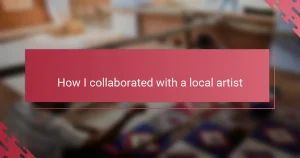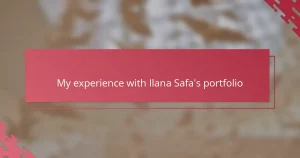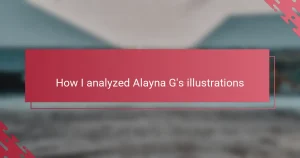Key takeaways
- Mastering Adobe Illustrator basics, such as understanding vector vs. raster graphics and using tools effectively, enhances creative capabilities.
- Tutorials serve as valuable resources, breaking down complex techniques and providing inspiration for unique designs.
- Adapting tutorial learnings into personal projects fosters originality and showcases individual style in a portfolio.
- Effective portfolio presentation requires organization, storytelling, and attention to visual layout to clearly convey artistic growth and skills.
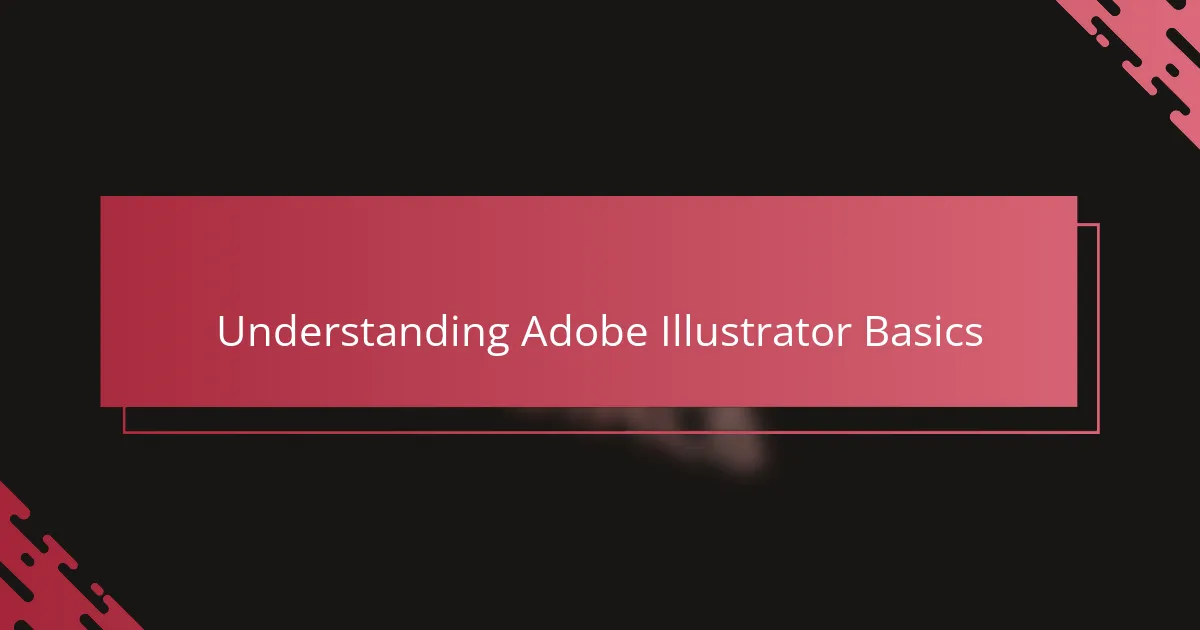
Understanding Adobe Illustrator Basics
Getting a grasp on the basics of Adobe Illustrator was like unlocking a new language for me. I remember the first time I learned about anchor points and paths—I was amazed at how these simple tools could create such complex shapes. Have you ever felt that excitement when something that seemed complicated suddenly clicks? That moment made me eager to dive deeper.
At the start, understanding the difference between vector and raster graphics was crucial. It made me appreciate why Illustrator is perfect for logos and illustrations that need to scale without losing quality. This foundational knowledge changed the way I approached my projects, making my work more precise and professional.
Mastering the toolbar felt like getting the keys to a creative playground. Once I got comfortable with the selection tools, shape builders, and pen tool, I realized how much control I had over my designs. It wasn’t just about learning software; it was about expanding my creative possibilities bit by bit.
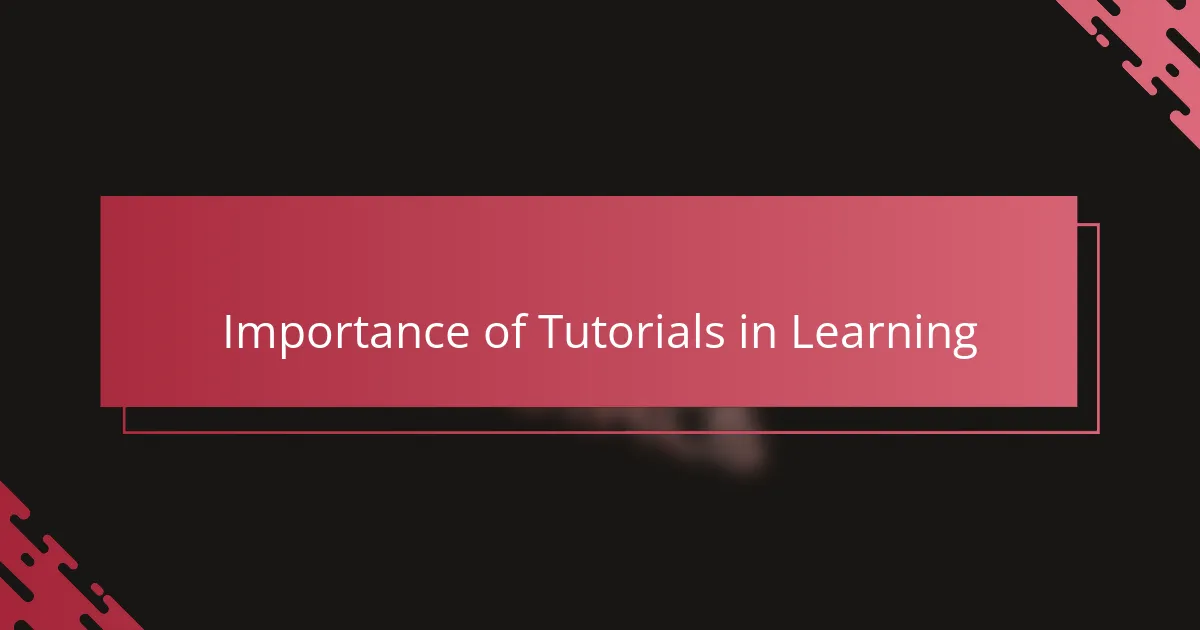
Importance of Tutorials in Learning
Tutorials became my guiding light when I hit a wall in Adobe Illustrator. Have you ever stared at your screen, unsure how to proceed? Those step-by-step videos and articles helped me break down complex techniques into manageable pieces, turning frustration into confidence.
What I found most valuable was how tutorials often reveal little tricks and shortcuts that I wouldn’t have discovered on my own. It’s like having a seasoned mentor beside you, sharing insights you’d otherwise miss. This made learning not just faster but also more enjoyable.
Sometimes, a tutorial would introduce a tool or effect that sparked an idea I hadn’t considered before. Those moments of inspiration made me realize tutorials aren’t just about copying—they’re about opening doors to creativity. Can you think of a time when a simple lesson led to your best design yet? For me, those tutorials were the catalyst.
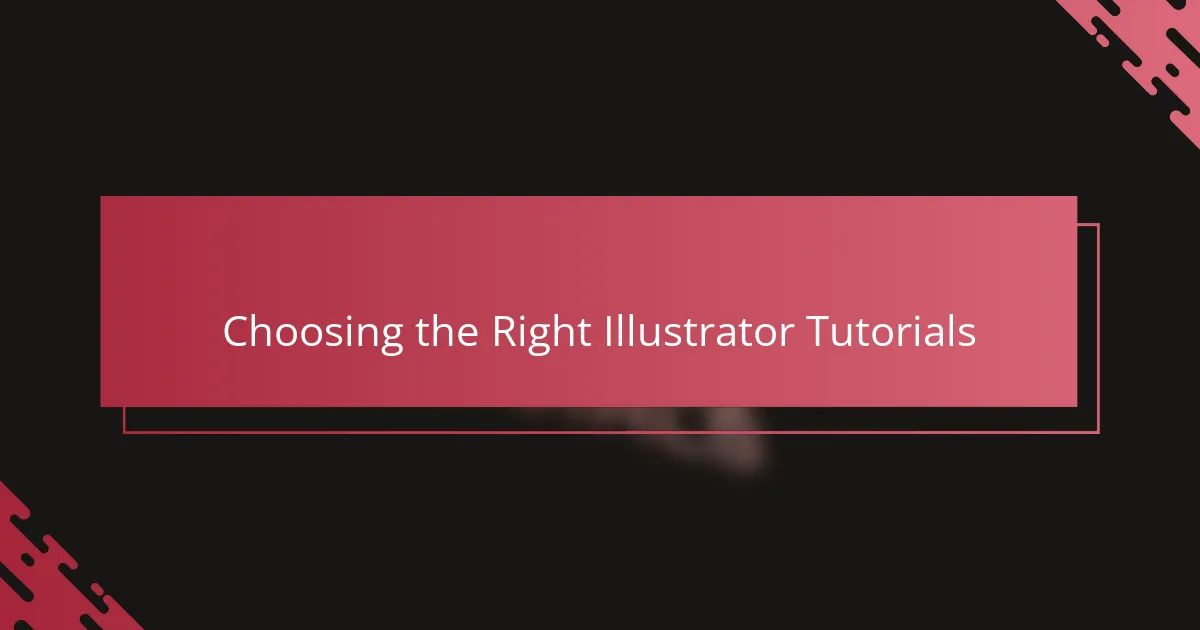
Choosing the Right Illustrator Tutorials
Choosing the right Illustrator tutorials felt like navigating a vast sea of options, and at first, I didn’t know where to start. Have you ever spent hours searching for the perfect tutorial, only to feel overwhelmed by all the content out there? I learned that focusing on tutorials matching my skill level—whether beginner or intermediate—made a huge difference in staying motivated.
One thing that helped me was looking for tutorials that aligned with my creative goals. For example, when I wanted to improve logo design skills, I searched specifically for those projects rather than generic lessons. This approach made the learning feel relevant and immediately rewarding, turning practice into purposeful progress.
I also found that reviews and community feedback on tutorials gave me a sense of their effectiveness before I even started. Isn’t it comforting to know if someone else’s experience was positive? Relying on trusted creators who explain concepts clearly helped me avoid frustration and kept my momentum going strong.
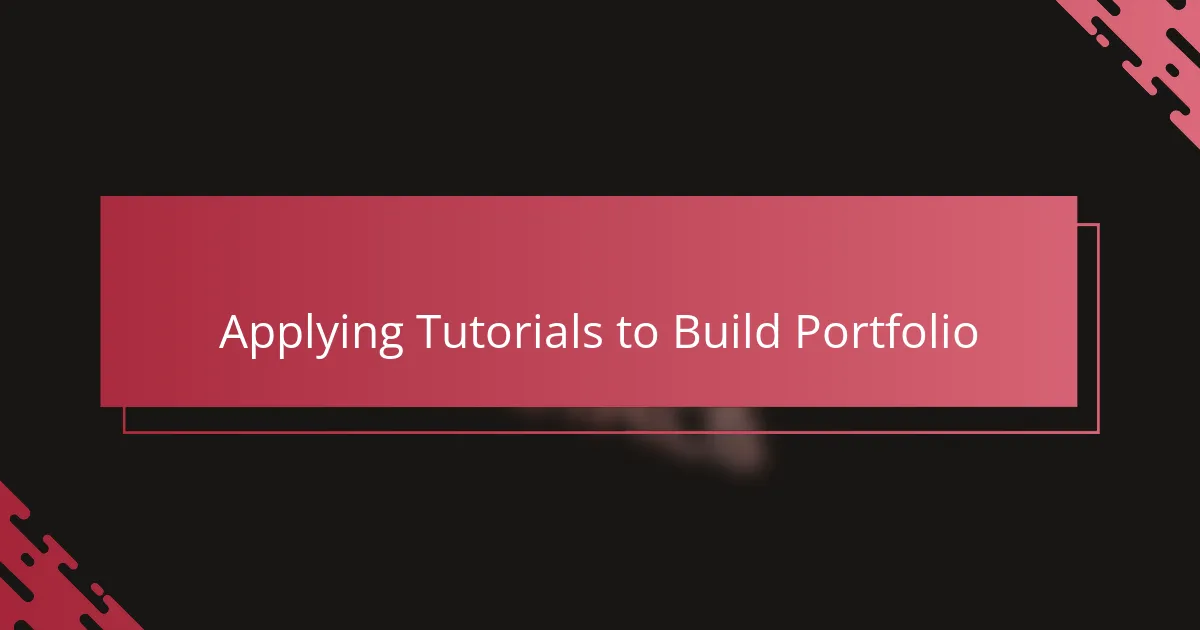
Applying Tutorials to Build Portfolio
Applying tutorials to build my portfolio was a game-changer. After following a tutorial, I didn’t just move on—I revisited the project, tweaking elements and adding my own style. Have you ever noticed how turning a guided exercise into a personal piece makes the work truly yours? That process helped me develop originality while still practicing core skills.
At times, I challenged myself by combining techniques from multiple tutorials to create something unique. It felt like piecing together a puzzle with tools I’d just learned, and the thrill of seeing it all come together gave me confidence in my evolving style. Did you ever try remixing tutorial steps to fit your vision? That’s where authentic portfolio work really starts to take shape.
What surprised me most was how these tutorial-based projects became conversation starters in interviews and client meetings. They showed not only my technical ability but also my commitment to learning and growth. I realized that applying tutorials isn’t just about copying—it’s about demonstrating how you transform lessons into your own creative language.
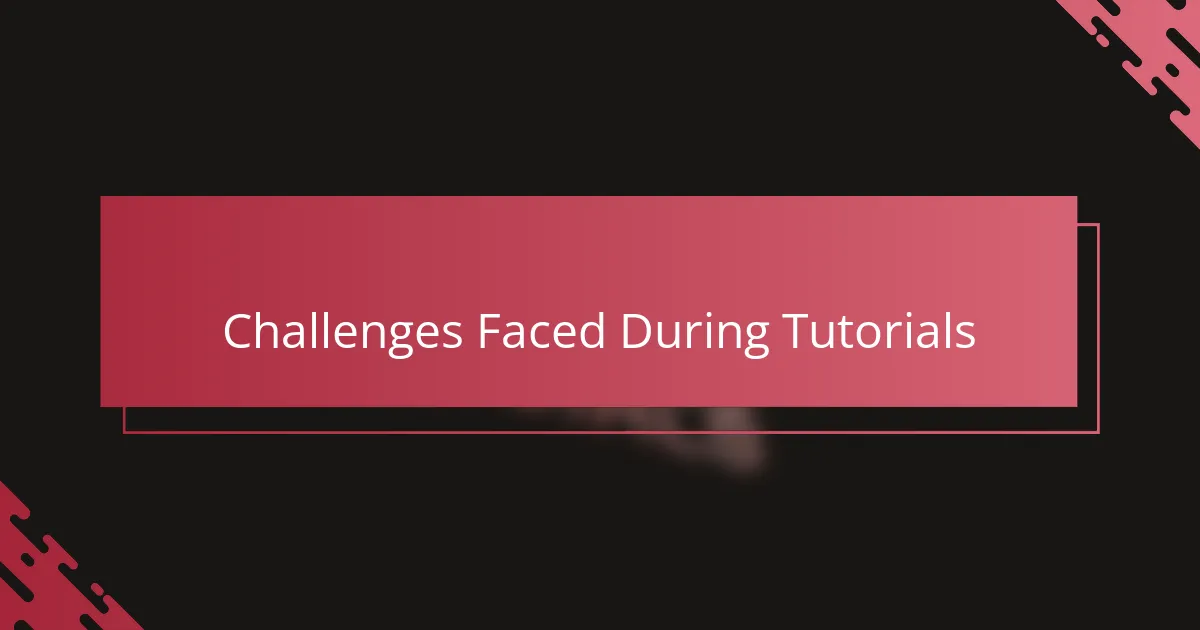
Challenges Faced During Tutorials
Sometimes, the sheer volume of tools and options in Adobe Illustrator felt overwhelming during tutorials. Have you ever found yourself stuck, unsure which tool to pick next? I definitely did, and it made progressing feel slow and frustrating at times.
Another challenge was following along with tutorials that assumed prior knowledge I didn’t have. When instructors skipped over certain steps or used jargon without explanation, I felt lost and had to pause frequently to research basics. It was a humbling reminder that learning at your own pace is essential.
I also struggled with perfectionism early on—trying to replicate every detail exactly as the tutorial showed. It took me a while to accept that mistakes are part of the process and that my own version could be equally valuable. Have you noticed how embracing imperfection actually frees your creativity? That shift made all the difference for me.
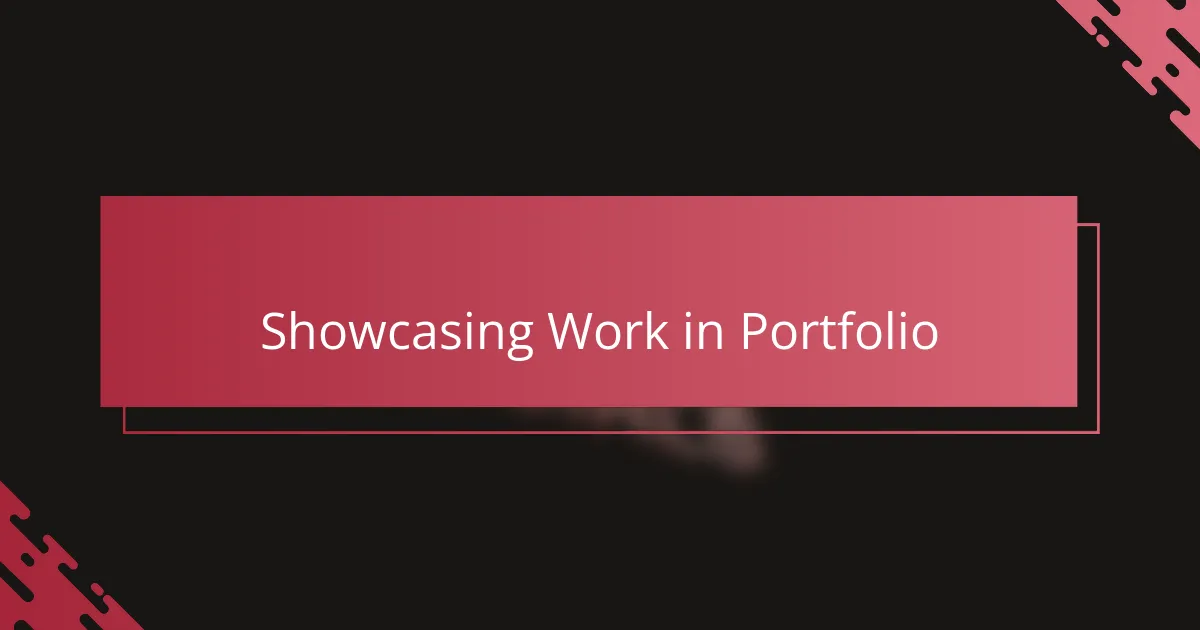
Showcasing Work in Portfolio
Showcasing work in a portfolio felt like telling my creative story visually. Have you ever watched someone’s portfolio and instantly understood their style and growth? That’s the power of curating your best pieces thoughtfully.
I learned that variety is key—mixing finished projects with tutorial-based experiments shows both skill and willingness to learn. When I included work that reflected lessons I’d struggled with, it sparked conversations about my journey, not just my outcomes.
Sometimes, it was tempting to overload my portfolio with everything I’d made. But I found that selecting only my strongest and most meaningful work made a clearer impression. Isn’t quality over quantity always more memorable? This approach helped me build a portfolio that felt authentic and professional.
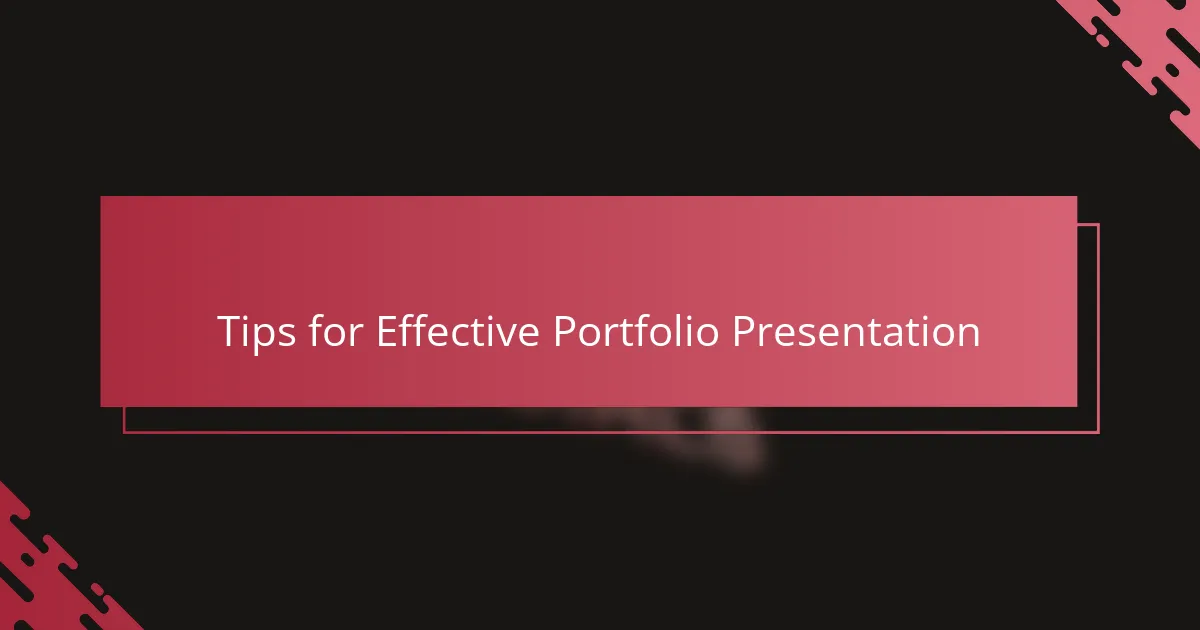
Tips for Effective Portfolio Presentation
Presenting your portfolio effectively goes beyond just uploading images—it’s about crafting a clear story. I’ve noticed that organizing projects by theme or technique helps viewers follow my creative growth without feeling overwhelmed. Have you ever flipped through a portfolio that felt scattered? Keeping things focused makes a big difference.
Another tip I’ve found valuable is using context to frame your work. Adding brief descriptions or sharing the challenges I faced during each project invites others into my process. It’s like giving a backstage pass to my creative journey, which makes my portfolio more relatable and memorable.
Finally, paying attention to the visual layout is crucial. I once underplayed spacing and sequence, and the portfolio looked cluttered. Now, I treat each piece like a frame in a gallery—clean, balanced, and easy to digest. What’s the point of great work if it doesn’t get the spotlight it deserves?
